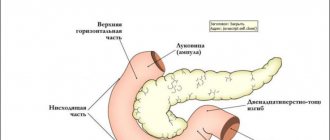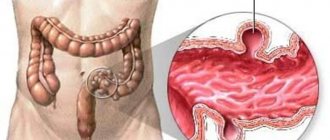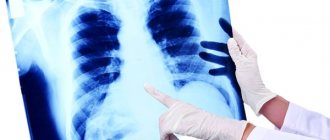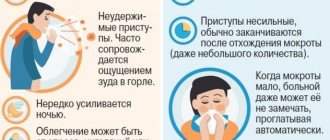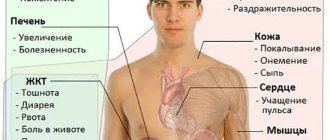A cold or acute respiratory disease (ARI) is well known to patients in clinics and doctors, since the disease annually affects citizens en masse. Coping with an epidemic is not so easy, but what to do if you need to not “fall out of action” and always be at the “peak” of your form? How to recognize acute respiratory infections at an early stage of development and begin competent treatment. But how to distinguish acute respiratory infections and acute respiratory viral infections in children and which drugs should be used first is indicated in this article.
Prevention of acute respiratory infections: a reminder for all adults
We all know from school that timely and competent prevention of acute respiratory infections can protect against colds and strengthen the body's defenses. Moreover, by following certain measures, it will be possible not only to avoid illness, but also to generally improve your own well-being and improve your mood.
So, let's look at the main types of prevention of acute respiratory infections in adults.
Use nasal breathing
Prevention of acute respiratory infections works if you properly organize your respiratory functions. Initially, you should breathe only through your nose. This way the air will warm up before it reaches the lungs and will be cleared of the smallest impurities of dust, bacteria and viruses it contains.
If you do the opposite and breathe through your mouth, then two dangers arise at once. Firstly, cold air that has not been cleared of small pollutants will go directly into the lungs, which can cause mucus deposition and cause bronchitis. Secondly, the mucous membrane of the larynx is damaged due to contact with cold air and becomes vulnerable to viruses and bacteria. Because of this, the risk of getting sick increases many times over.
Avoid crowded places
The primary measures to prevent acute respiratory infections are to limit contact with sick people and avoid large crowds of people, where the virus can be transmitted from one to another with lightning speed. If this cannot be achieved (for example, it is problematic to take time off from work, it is not possible to miss school, etc.), then to protect your own health during epidemics, use disposable gauze bandages. According to the instruction on the prevention of acute respiratory infections, such dressings should be changed at intervals of 1.5-2 hours.
Maintaining personal hygiene rules
This is not just about mandatory washing of hands and face upon returning from work or a walk. This is an unconditional rule for absolutely everyone. In addition, prevention of acute respiratory infections may include rinsing the nasal passages. Every time you return from a walk, it is recommended to rinse your nostrils using a weak saline solution (add 1 teaspoon of sea salt without perfumes and dyes to 500 ml of warm water). Thanks to this simple action, it will be possible to reduce the concentration of microbes on the nasal mucosa.
Frequent ventilation of the room
In order for the prevention of acute respiratory infections and acute respiratory viral infections to produce results, we advise you to ventilate the premises more often. When the air in a room is static, it is the most favorable environment for the proliferation of viruses and bacteria. During the period of colds, windows and vents should be opened for ventilation every 2 hours for 10-15 minutes. To avoid drafts, open windows alternately in each room. Thanks to this simple solution, it will be possible to reduce the concentration of pathogenic agents and ensure a flow of fresh air into the room.
Regular wet cleaning
Effective prevention of acute respiratory infections also includes such a moment as thorough cleaning of all surfaces in the room. Since viruses and bacteria tend to settle along with dust, during the active phase of the spread of colds, rooms should be wet cleaned every day. Additionally, twice a week it would be a good idea to carry out a more serious antibacterial treatment, using ready-made household chemicals with an antibacterial effect or folk recipes.
For example, disinfecting premises with vinegar vapor gives very good results. To do this, dilute a teaspoon of acetic acid in a liter of water and heat the solution on the stove. Wait for the mixture to boil, reduce the heat and continue boiling the solution at minimum temperature for 10-15 minutes. After such treatment, it is recommended to ventilate the premises.
Take care of air humidification
During the period of active spread of colds, it is necessary to take care of the main barrier to viruses entering our body - the mucous membranes of the nose and throat. To prevent them from becoming dry and developing cracks through which pathogenic agents can penetrate, you should think about additional air humidification.
For example, the prevention of acute respiratory infections will be much more effective if you install a special device in the room that will automatically release a portion of wet steam into the room. If it is not possible to buy such a device, then you can make do with improvised means - install containers of water in each room. The liquid will gradually evaporate and thereby humidify the air.
Be more active
Sports and physical exercise have a good effect on the entire body, increase endurance, improve the functioning of internal organs, and strengthen the immune system. It is not without reason that many doctors recommend going to the gym as the best measure for the prevention of acute respiratory infections.
Even if you can’t find time to go to the gym, you can always find a way out of the situation. For example, instead of public transport, get to work on foot, go down and up not by elevator, but by stairs.
Enrich your diet with healthy foods
Immunity during colds requires enhanced support. You need to strengthen your body literally in all directions, including by increasing the amount of incoming vitamins and microelements. Thus, the prevention of acute respiratory infections and acute respiratory viral infections will give a good result if, as the basis for your diet, you prefer vegetables rich in fiber, fruits, dietary chicken and fish rich in Omega 3 and Omega 6 vitamins to increase immunity.
Universal and timeless advice for everyone: during the period of viral activity, increase the consumption of foods rich in vitamin C. Eat more green onions, brew healthy fruit drinks and teas based on rose hips, currants, cranberries, and lingonberries. If possible, avoid drinking alcohol and tobacco, as they negatively affect the body's immune functions.
Reduce the likelihood of stressful situations
Stress is one of the main factors for poor health. It is not only the psycho-emotional sphere that suffers. Due to a decrease in cognitive functions, changes occur at the level of all organs and systems, including the immune defense.
To avoid stress, you should review your daily routine:
- get a good night's sleep, setting aside at least 8 hours for sleep;
- regulate work and rest time;
- avoid mental and nervous stress.
By the way, walking in the fresh air and playing sports are very useful in this regard - they activate the production of endorphin and dopamine - the hormones of joy.
The effect of the disease on the body
From the moment the virus enters the body, it initially settles on the mucous membrane of the upper respiratory tract. This is where the growth and reproduction of pathogenic microorganisms begins.
While the number of virus cells is not so noticeable for the body, it does not have any reaction. This period during the course of the disease is usually called incubation. During an acute respiratory infection, it often lasts from two hours to two to three days.
After this, the virus begins to destroy healthy cells, provoking inflammatory processes. When the number of pathogenic microorganisms reaches an amount that a person cannot cope with, he begins to feel the first symptoms of the disease.
When the body receives the correct treatment, antibodies are gradually produced that kill the virus. Consequently, all signs of the disease become weaker, until they disappear completely. During this period, the mucous membranes are cleansed through copious discharge from the nose (runny nose) as well as from the lower respiratory tract.
Prevention of acute respiratory infections in adults using pharmaceutical drugs
Of course, the described measures to improve health and increase immunity work great and have been used for a long time. However, they are often not enough. To increase the effectiveness of the prevention of acute respiratory infections, many doctors prescribe additional drug therapy to patients, for example, a drug for the prevention and treatment of acute respiratory infections in adults - Derinat. It is available in a convenient format in the form of drops and sprays, making it convenient to take with you everywhere - be it to work or on a trip out of town.
The drug can be used both for the prevention and treatment of acute respiratory viral infections in adults, since it has several actions simultaneously:
- affects the cause of the disease - helps reduce the activity of viral agents that have entered the body;
- improves the body’s own defense – activates the immune system;
- restores and strengthens the mucous membrane of the nose and larynx, thereby erecting a reliable barrier to pathogenic agents.
The drug has no contraindications, except for individual intolerance. Approved for use from 1 day of life. You can learn more about the capabilities of Derinat spray and drops used in treatment and prevention regimens for ARVI on our website.
Which doctor should I contact?
With acute respiratory diseases, you should seek help from a general practitioner.
He conducts a complete clinical examination of the patient and, if necessary, will refer him for a blood test. The doctor will inform the patient about preventive measures and the correctness of taking prescribed medications.
When and how to treat acute respiratory infections in an adult?
There is an opinion that the human immune system should fight colds on its own. However, this statement should not always be taken on faith, since in most cases, in acute acute respiratory infections, the symptoms in adults manifest themselves quite strongly and require immediate treatment.
No one disputes the strength of a person’s own immunity. But when it is weakened, the health risks increase many times over. The disease can develop and lead to complications that can cause serious harm to the body.
It is advisable to seek medical help when the first signs of the disease are detected, and also to take the necessary preventive measures when in contact with a sick person. As a rule, the incubation period of acute respiratory infections in adults lasts up to 2-5 days. Accordingly, to prevent the disease from progressing, you need to stop it at the initial stage, and also take care of strengthening the immune system in advance.
What is acute respiratory infection and its types
ARI is an acute respiratory disease that can be caused by viruses or bacteria.
Depending on the pathogen, symptoms and treatment will vary dramatically. In adults, the course of the disease is similar to the flu. An acute respiratory infection, the symptoms and treatment of which in adults can vary greatly depending on the cause, can be a viral or bacterial disease. The difference between viruses and bacteria is that the former are not able to survive and reproduce outside the human body. In addition, a certain type of virus infects a certain type of cell.
Thus, the hepatitis virus cannot multiply in nerve cells. It will “work” exclusively in liver cells. Bacteria, in turn, are able to reproduce by cell division. However, the vast majority of them do not pose any particular danger to human health. There are lactobacilli, which, on the contrary, are beneficial.
Why does acute respiratory infection occur and how long does it last in adults?
A weakened immune system makes adults vulnerable to viruses. If you do not pay attention to your own health, then symptoms of acute respiratory infections will most likely appear immediately after contact with an infected person. The following have a negative impact on the body's protective functions:
- unbalanced diet,
- inactive lifestyle,
- allergic reactions,
- chronic fatigue syndrome,
- long-term use of antibiotics,
- hormonal imbalance,
- active and passive smoking,
- alcohol abuse,
- polluted atmosphere,
- bad dream,
- parasitic diseases,
- imbalance of intestinal microflora,
- insufficient personal hygiene,
- frequent stressful conditions.
The rate of spread of acute respiratory infections in adults is also influenced by social factors. Adults spend most of their time indoors and in close contact with others. In offices there is usually a struggle to keep the windows closed and the air conditioning on. Stagnant, dry air is an excellent environment for the spread of viruses and is harmful to the nasal mucosa. In such conditions, the risk of contracting an acute respiratory infection is very high.
Treatment of acute respiratory infections in adults should take place in a calm environment, but not “on your feet.”
Moreover, dreaming of being home sooner, adults jump into crowded public transport. By excluding walking after work, people deprive themselves of fresh air and are exposed to infection. In a cramped bus, the risk of getting sick increases several times. Passengers sneeze, cough, blow their nose. As a result, a huge number of viruses accumulate in the cabin.
Causes of acute respiratory infections
The cause of the development of acute respiratory infections are pathogenic microorganisms that penetrate a healthy human body and begin active activity there.
ARI, the symptoms and treatment of which in adults should be under close supervision not only of the patient, but also of the general practitioner, is accompanied by a wet cough, which is often combined with purulent sputum. Every person encounters the acute respiratory infection virus several times every day. However, this is not enough to get sick.
In order for the disease to move into the development stage and then into an acute form, you also need:
- severe fatigue of the body;
- weakened immune system;
- stressful conditions;
- hypothermia of the lower extremities;
- inflammation in connective tissues.
Acute respiratory infections in adults
However, acute respiratory infections affect infants, children, adults and the elderly. The most difficult category for diagnosing acute respiratory infections are pregnant women and the elderly. In any case, treatment for acute respiratory infections in an adult should be started immediately. This is primarily explained by the fact that acute respiratory infections are a contagious disease, i.e., they can provoke a subsequent chain of diseases. Secondly, acute respiratory infection is a disease that can subsequently manifest itself as complications. In addition, it is necessary to be aware that acute respiratory infections in adults differ according to age, as well as the condition (pregnancy).
The most vulnerable is considered to be the elderly age of a person, when his immunity is not able to cope with the aggression of viruses that attack the body. It is believed that the body of an elderly person is not able to fully resist the aggression of foreign viruses, that it is maximally vulnerable and susceptible to the effects of foreign agents that oppress and poison the cells of a living organism.
A separate topic is acute respiratory infections during pregnancy. The most unpleasant thing is that the specific virus that causes the disease is a direct threat to the condition of the fetus that is being born. Ideally, the placenta is a natural barrier that can protect the unborn child from infection. However, many factors - the length of pregnancy, the condition of the expectant mother (threat of miscarriage, the presence of chronic diseases, etc.), as well as the inability to take medications - are negative factors that can lead to severe consequences. It is known that acute respiratory infections in pregnant women are accompanied by disturbances in the functions of various organs, increased blood pressure, the appearance of protein in the urine, and most importantly, with the individual reaction of the pregnant woman’s body to a viral attack.
Risk factors
Almost every man or woman knows firsthand what acute respiratory infections are. For the vast majority of adults, unpleasant symptoms of acute respiratory infections make themselves felt 2-3 times a year. As a rule, the peak incidence of colds occurs in the damp and cold seasons, when the activity of viruses increases, and the body cannot resist them due to decreased immunity caused by vitamin deficiency. For various reasons, acute respiratory infections and acute respiratory viral infections pose a particular danger to people over 55 years of age, asthmatics, patients with diabetes, endocrinological and neurological diseases, as well as for patients with hypertension. Pregnant women should be very careful.
Main symptoms of acute respiratory infections
Acute respiratory infections in adults are characterized by a variety of manifestations. Depending on the causative virus, the disease can occur in various forms - mild, mild, moderate, acute, suddenly severe.
Based on the existing immunity, as well as the degree of the disease, the symptoms of acute respiratory infections are very different:
- elevated body temperature (37 C and above);
- high body temperature, fever (38 - 40 C);
- intoxication of the body (absent, mild, increasing);
- cough (dry, with wheezing, with chest pain, with severe difficulty breathing, etc.):
- runny nose (mild, increasing, medium, severe, with obstruction of breathing);
- enlarged lymph nodes (unexpressed, in the presence of complications);
- complications (development of croup, blockage of the bronchi, loss of consciousness, bleeding from the nasal cavity, hemorrhages of internal organs, damage to peripheral nerves, etc.)
A runny nose and sore throat are the first signs of acute respiratory infections in adults. These manifestations of the disease seem harmless to many. Not paying attention to the characteristic symptoms of acute respiratory infections, people go to work or on errands. This behavior interferes with the immune system's ability to fight infection. As a result, the body produces the entire list of unpleasant manifestations of a cold.
Developing symptoms of acute respiratory infections in an adult should not be ignored. If therapy is prescribed in a timely manner, there will be serious chances not only to get rid of the disease and return to the usual rhythm of life, but also to avoid possible complications. Depending on the type of virus, these complications can sometimes be quite serious.
How to cure quickly?
Timely therapy will help you quickly get rid of the main signs of acute respiratory infections. That is, treatment should begin when the first signs of the disease appear.
If you need to get rid of the signs of the disease quickly, then you should resort to combination therapy, use several drugs at the same time, stop using antibiotics and monitor the state of the immune system.
You can use various means to improve the functioning of the immune system:
- Immunal;
The drug is used for treatment of diseases - echinacea extract.
Treatment of acute respiratory infections in adults
Treatment of acute respiratory infections in adults begins with diagnosis.
Most adults who value their health and the health of those close to them do not wait for the first symptoms of the disease. They, reasonably believing that it is easier to prevent a disease than to subsequently treat it, take a number of preventive measures against acute respiratory infections, thereby protecting themselves and others from the possibility of becoming infected.
However, every reasonable person at the first signs of an acute respiratory infection (general malaise, weakness, runny nose, sneezing, pain in the head, eyes, muscle pain, sore throat, cough, elevated body temperature, fever, etc.) should make a decision timely need for diagnosis and appropriate treatment.
Treatment of acute respiratory infections in adults is complex. Most often, after an examination, a competent specialist will prescribe effective antiviral drugs, antihistamines, as well as drugs to eliminate symptomatic manifestations - antipyretic, analgesic, drugs for runny nose, cough, etc.
When treating acute respiratory infections in adults, one should not neglect the conditions surrounding the sick person. Such as bed rest, fresh humidified air, fortified, abundant drinking, gentle nutrition and lack of physical and emotional stress.
You need to respond immediately to symptoms of acute respiratory infections in adults. Timely therapy will help defeat a cold at an early stage. If the infection reaches the lower respiratory tract, it will be much more difficult to cope with. In addition, the risk of complications will increase.
It is necessary to begin treatment of acute respiratory infections in adults at the first characteristic manifestations of the disease. At this stage, many people make the mistake of prescribing medications on their own. You shouldn’t be negligent about your own health and throw money away. It's better to see a doctor. He will determine the cause of the disease and prescribe a suitable remedy.
When it comes to the development of acute respiratory infections, treatment in adults includes various medications. Most often, specialists prescribe complex antiviral agents. These drugs include Derinat spray. The modern drug has a triple effect:
- fights pathogens: viruses, bacteria and fungi;
- promotes the rapid restoration of damaged areas of the mucous membrane of the nasopharynx - the first and most important barrier to respiratory infection, thereby reducing the risk of secondary infection and the development of complications;
- helps strengthen the body's own defenses - natural immunity;
Since the temperature during acute respiratory infections in adults can reach 37-38 degrees, and along with it there are accompanying unpleasant manifestations of the disease, together with the Derinat spray, the doctor can prescribe medications to relieve the symptoms of acute respiratory infections of the virus.
What medications are prescribed for acute respiratory infections?
At the beginning of the article it was said that acute respiratory infections can be caused by bacteria, fungi, viruses, and more often a combination of them. Therefore, different groups of drugs may be required.
For example, when green snot appears, you will need antibacterial drugs for systemic use: amoxiclav, sumamed, ciprofloxacin, as well as local antibiotics: isofra, polydexa. For nasal congestion, to prevent complications, vasoconstrictor drops will be useful: galazolin, tizin.
Article on the topic: list of cheap analogues of sumamed.
When a cough appears, the doctor will focus on its nature: dry or wet, and will select an expectorant (licorice root, Gedelix, Doctor Mom), an antitussive (Stoptussin) or a mucolytic agent (Ambrobene, Lazolvan).
Immunomodulators may be prescribed: imudon, lysobact and other drugs. Therapeutic therapy for acute respiratory infections is a set of measures aimed at eliminating symptoms, and only when bacterial flora appears is it necessary to include antibiotics that destroy pathogenic microbes.
How to relieve symptoms and treatment of acute respiratory infections in adults?
Of course, an experienced doctor should select the right technique and explain in detail how to treat acute respiratory infections in adults. If the symptoms of acute respiratory infections are severe, you should never self-medicate, as this can aggravate the course of the disease and provoke an exacerbation of the condition. Auxiliary measures should be used only as a supplement.
Time-tested methods will help speed up the healing process. Thus, treatment of acute respiratory infections at home in adults can be supplemented with the following effective methods of traditional medicine:
- Mustard foot baths. Add a tablespoon of mustard powder to a basin with 5 liters of hot water. The temperature is adjusted individually. You need to steam your feet for 15 minutes, then dry them and put on warm socks.
- Spicy tea. The vitamin drink relieves sore throats and removes toxins from the body. Add grated ginger root, a slice of lemon, a little honey, star anise and a pinch of cardamom to a glass of your favorite tea.
- Inhalations. Add a few drops of essential oils to a container of hot water and breathe over the steam for 10 minutes. The procedure helps relieve nasal congestion. Eucalyptus, mint, and juniper oils are suitable for inhalation.
To avoid unpleasant symptoms of acute respiratory infections, adults should take care of prevention. Proper nutrition, an active lifestyle, regular ventilation, healthy sleep and giving up bad habits are the key to good health.
Diagnostics
https://youtu.be/IdZFPJNDFTs
Diagnosis of acute respiratory infections is carried out in order to determine the presence or absence of infection and find out the type of causative agent of the disease.
Diagnostic methods depend on the patient's symptoms and general health and include:
- an oral interview in which the doctor determines the duration and intensity of symptoms;
- urine test, which allows you to assess the general condition of the body;
- a blood test indicates the presence of infection and inflammatory processes;
- bacterial culture of a nasopharyngeal swab.
All tests are done within 1-2 days, except for bacterial culture, which is in the laboratory for 4-6 days in special equipment.
When all the tests are ready, the specialist makes a diagnosis and prescribes treatment. You should not self-medicate, because the signs of acute respiratory infections may be similar to the symptoms of another disease.
Temperature during ARVI
Since childhood, we all know very well that fever during acute respiratory viral infections or acute respiratory infections is a completely normal phenomenon. And yet we try to bring it down as soon as we see that the thermometer shows a mark above the cherished 36.6.
What temperature should be during ARVI?
Essentially, an elevated temperature is a sign that the body is fighting an infection. This is a kind of protective reaction, thanks to which pathogens begin to multiply much more slowly. And some of them even die. As a result, the disease disappears safely.
In addition, temperature during ARVI can be regarded as a signal for the immune system. She “understands” that the body is going on the offensive. The activity of leukocytes increases significantly. The latter become more aggressive and absorb significantly more harmful bacteria.
Experts say that even a high temperature (reaching 37.5-38 degrees) during ARVI should not be brought down. This can disrupt immune activity and weaken the body's natural defenses.
When should you lower your temperature?
First of all, you need to monitor the patient’s well-being. If the patient tolerates the fever normally, it is advisable to be patient. If the temperature is accompanied by weakness, increased fatigue, dizziness or headaches, it is better to take action without waiting for the fever to subside. And even in this case, whenever possible, it is recommended to give preference to natural rather than drug therapy methods.
The situation is considered critical for adults when the body temperature during ARVI rises above 39.5 degrees. Because of this, gradual destruction of the nervous system may begin - the normal spatial structure of vital proteins changes.
How long does a fever last for a cold?
Usually, already on the second or third day of acute respiratory viral infections and acute respiratory infections, the temperature begins to decrease. With the flu, this period can be somewhat longer and last up to five days. Accordingly, if a severe cough appears on the fifth day of ARVI, and the temperature does not subside or rises, it is worth undergoing re-diagnosis. It is likely that this is a signal that a more complex bacterial infection has joined the usual infection. It will be almost impossible to combat such a problem without the help of antibiotics. Moreover, you need to start taking them as soon as possible.
WomanAdvice.ru
If the temperature is below normal
There are cases of body temperature falling below normal due to a viral infection. If the temperature drops to 34-35˚C, the main symptoms will be:
- extreme weakness;
- trembling of limbs;
- pale skin;
- speech is slurred;
- dizziness;
- hallucinations, delusions;
- loss of consciousness.
ARI can also occur if there is a history of severe chronic pathology, such as AIDS, endocrine diseases, or anorexia.
If such symptoms are detected, you must urgently call an ambulance. A decrease in body temperature is much more dangerous than an increase.
It is important to remember that fever is a protective reaction of the body. If you follow bed rest and the doctor’s recommendations, complete recovery will occur without serious consequences.
https://youtu.be/AHXEyQ86GrU
How long does the temperature last for ARVI?
ARVI is a viral disease that is characterized by a runny nose, cough, red throat and fever. The temperature during ARVI is a kind of immune defense of the body against attacking viruses. When the temperature rises, leukocytes are activated and begin to fight against enemies - viruses that have entered the body.
Many people are interested in how long the temperature lasts during ARVI, because the presence of a high temperature for too long can indicate more serious diseases. But on the other hand, by lowering the temperature and not giving the body the opportunity to fight the infection, we ourselves sometimes become the culprits of additional complications.
If you know how long the temperature lasts during ARVI, you will not worry in vain and take unnecessary medications. Normally, the temperature during ARVI lasts no more than 2-3 days, the permissible maximum is 5. This is the time that is enough for the body to develop its own antibodies and defeat the virus. But with bacteria it’s not so simple. If you contract bacterial bronchitis or pneumonia, the temperature may last much longer and be quite high. This is where you need to see a doctor. Bacterial infections are treated with antibiotics, since the body is not able to completely defeat these microorganisms.
How many days can the temperature during ARVI not be brought down by medications? It all depends on the patient’s well-being. An important condition: there is no need to reduce the temperature to a normal level, you just need to lower it.
If the temperature rises above 39 degrees, then it must be reduced. It has been proven that temperatures above 40 degrees cause damage to the central nervous system due to the breakdown of proteins, so you should not tolerate too high a temperature.
Many mothers are concerned about the question: “How long does the temperature last during ARVI in children, and when does it need to be brought down?” Antibodies to viral infections are produced in children in the same way as in adults, so the permissible limit is 5 days. Children are more sensitive to temperature; too high a temperature can trigger the development of febrile seizures. Therefore, if the baby has a temperature above 38 or 38.5 degrees, it is necessary to take measures to reduce it.
Many people mistake any increase in temperature for a serious bacterial disease. They often prescribe antibiotics or other strong medications to themselves, preventing the body from performing its function - fighting the virus. This leads to the development of complications. Therefore, if your temperature rises, do not panic. Watch for symptoms. If, against the background of an increase in temperature, there is a runny nose, redness in the throat and a cough, most likely it is a simple ARVI. With viral diseases, the temperature tends to decrease for 3-4 days, which can also be a signal that the body is coping with the disease.
How long does the temperature last for ARVI if there is a bacterial infection? Here, too, you can understand everything by the symptoms. If the temperature rises after an acute respiratory viral infection and your health worsens, then it can be assumed that a bacterial disease has occurred. It happens that the temperature after an acute respiratory viral infection dropped, and there was an improvement, but after a couple of days it became worse again, and a fever began. In this case, consultation with a doctor is mandatory.
Bed rest, moist and cool air, and plenty of warm drinks will help reduce the temperature at home. Of the medications, the safest and approved for both adults and children are paracetamol-based antipyretics. These can be tablets, suppositories or syrup. It is important not to exceed the dose and time between doses of the medicine. If all of the above methods do not help, and the temperature remains high, you need to call a doctor.
fb.ru
Where is the best place to measure?
There are three areas on the human body where body temperature can be measured:
- in the armpits (axillary measurement);
- under the tongue (oral dimension);
- in the rectum (anal measurement);
- on the forehead.
It is important to remember that an ordinary mercury thermometer can only measure temperature in the armpits.
In order for the indicator to be correct, before placing the thermometer in the axillary area, it is necessary to wipe the axillary area with a damp cloth or towel. When taking measurements, the hand should be pressed tightly to the body.
Good to know: Is an acute respiratory infection without obvious signs contagious?
Inexpensive medicines
Patients often ask which medications are inexpensive, but at the same time help with colds. Most often these are Paracetamol, Aspirin, Ibuprofen, Analgin, Ambroxol, Galazolin, Echinacea tincture.
Paracetamol can also be used in children, but Aspirin cannot. Inexpensive antiviral drugs Remantadine and Acyclovir are prescribed as prophylaxis in the first days of a cold, they are used as prescribed by a doctor. If the acute period has passed, there is no point in continuing to take antiviral medications; you need to use medications for symptoms, for runny nose and cough. Septefril treats the respiratory tract well. It suppresses viruses, fungi, staphylococci, and has antiseptic properties.
Good to know: How many days are needed to treat acute respiratory infections?
Nutrition to support the body
For proper treatment of acute respiratory infections, it is first necessary to reduce the load on the body. Eliminate fatty, fried, spicy, high-calorie foods from your diet. Drink more healthy liquid, dissolve honey under your tongue until it is completely dissolved.
The diet of a sick person should be gentle - you should not starve, nor should you overload the body with food. The diet should be complete in composition and include foods that are easily digestible. Culinary processing of food should also not create unnecessary stress on the digestive system.
To increase the body's resistance to infection and restore vitamin content, consume the following foods:
- rich in vitamin C (citrus fruits, kiwi, rose hip decoction, etc.),
- B vitamins (eggs, vegetables, poultry), retinol (green and yellow vegetables, egg yolk, cottage cheese, butter).
If there is no appetite, the patient should not be forced to eat. At this time, all the body’s forces are aimed at fighting the infection, so the diet should be as light as possible - broths, cereals, fresh vegetables and fruits, dairy products. As soon as the patient recovers, the appetite will appear and it will be possible to return to the previous diet.
Drink plenty of fluids
A patient with an acute respiratory disease needs to drink as much fluid as possible, since the disease is almost always accompanied by general intoxication of the body.
However, not just any drink can be consumed; in this situation, it is best to drink:
- fruit drink made from cranberries;
- weak warm tea with milk or lemon;
- mineral water (preferably still);
- juices that are better to prepare yourself, rather than packaged ones.
Digital Thermometer
Gaining more and more popularity. The advantages include:
- temperature measurement lasts a short time (up to 1 min);
- almost impossible to damage;
- at the end of the measurement, the sound timer is triggered;
- safe for the environment.
A significant drawback is the large error in measurements (especially in the armpit).
A type of electronic thermometer is a pacifier thermometer (an electronic sensor is built into a latex or silicone nipple). Very convenient for use in infants.
We take measurements
To answer this question, you first need to measure the temperature correctly. Several types of thermometers are used for these purposes:
- mercury thermometer;
- Digital Thermometer;
- chemical thermometer;
- infrared thermometer.
The first two types of thermometers are widely used for household use.
If the temperature does not go down
There are emergency conditions in which it is necessary to urgently call an ambulance:
- temperature 39.5-40˚C, which is not reduced by various medications, especially in pregnant women and children;
- high temperature (38˚C) lasts for a week;
- "jumps" in temperature over several days;
- frequent vomiting;
- confusion;
- double vision;
- severe pain in the abdominal area;
- involuntary bowel movements;
- difficulty swallowing;
- speech is slurred;
- Strong headache;
- stiff neck.
Antibacterial agents
If the disease is caused by bacteria, then the doctor may prescribe Ciprofloxacin for acute respiratory infections. The drug is available in the form of tablets, suspensions, and other forms. The drug is not used in children, with the exception of complex urinary tract infections; it is also not recommended for breastfeeding women, but regarding pregnant women, doctors have not come to a consensus, but believe that the drug can be taken, but under the supervision of a therapist.
Good to know: acute respiratory infections during pregnancy: how to cure and protect yourself
Elevated temperature with ARVI
Why does the temperature rise during ARVI? This question interests many patients. To understand how to normalize body temperature and treat ARVI, you need to understand what ARVI is. ARVI is an acute respiratory viral infection that most often affects people during the cold season. The occurrence of this disease is associated with cold air, which has a detrimental effect on the respiratory tract. A person can be cured if he consults a doctor in time. Most often, acute respiratory diseases are observed in people who work in cold air or walk very often, without covering their airways with a scarf or other things.
ARVI is a viral disease with the same symptoms and causes (cough and runny nose). Diseases of the ARVI group have many symptoms.
Symptoms of diseases from the ARVI group
A runny nose occurs as a result of inflammation of the mucous membrane. Any type of runny nose must be treated promptly, as it can lead to more complex situations. When the runny nose is advanced, it becomes stronger. If at first an unpleasant mucous liquid simply flows, then thick mucous lumps form.
Another side effect of inflammation of the mucous membrane is a sore throat. It is accompanied by a cough and pain when swallowing both liquids and solid foods. There are two types of cough: dry and wet. The first greatly irritates the throat, and the second, due to clots of mucus, prevents inhalation. You cannot be considered cured of the disease until these first symptoms disappear. There is a feeling of slight weakness and fatigue, cold, nausea, and you may feel dizzy.
Temperature during ARVI is one of the main symptoms, and it varies depending on the type of disease.
If you have a cold, the fever will only last a few days. If it is tonsillitis and similar diseases, then the temperature lasts about two weeks, sometimes more. Also, how long this condition will last depends on the severity and neglect of the disease. Accordingly, the more advanced the disease, the more difficult it will be to tolerate and the longer the temperature will last. Sometimes when the disease occurs there is no fever, but there is a low temperature and weakness.
Sometimes, with an advanced disease, the temperature can remain under 40° C for about two weeks with periodic changes in the positive direction. A person survives only because the body has adapted to such a temperature. If it ranges from 38 to 39° C, then the patient may even feel normal. Despite this adaptation, after recovery, side effects may occur due to a long period of high fever, such as wax plugs and a stuffy nose, which even strong medications do not help.
When a person falls ill with any form of acute respiratory viral infection, the immune system is under severe stress, and accordingly, it must be supported with vitamins and sometimes antibiotics. Otherwise, you can start a viral infection. Lymph nodes can become inflamed, most often in the neck, but this can happen if you get a cold in your neck after standing in the cold air. With such inflammation, other symptoms do not always appear, except that the temperature may rise to 37.5 ° C.
ARVI can affect both children and adults; it is impossible to insure against this, even if you regularly exercise, exercise, and take vitamins.
The incubation period for all diseases of the ARVI group lasts up to 7 days, and the minimum is 1-2 days. There are 3 groups of patients. Each has characteristic signs of transmitting diseases of this group. In addition to these groups, there are others, but we highlighted the following, since they have their own specifics:
- Young children. Their illness is especially severe, since any cold can turn into a serious illness accompanied by high fever. Cough and runny nose are also difficult to tolerate. When a wet cough begins, it is most difficult for children: they begin to be afraid. In most cases, even children who can speak begin to fear all the symptoms.
- Pregnant women. All diseases of the mother are transmitted to the fetus, and this is very dangerous, since the disease affects the fetus. Antibiotics should also not be taken, because they cause just as much harm. In this case, it is easier to take care of yourself; at the first signs of illness, take a double dose of vitamin C; you cannot start the disease, this can greatly harm the child. The child may be born sick or even die.
- Elderly people (disabled people and people in poor health). This group of people has very weak immunity, so it is necessary to carefully take care of yourself and improve your health. It is better to take a course of various vitamins and minerals, move more, than constantly lie down and hope to be cured with painkillers.
Possible complications of ARVI
These include the following phenomena:
- An intensified form of colds. In particular, this occurs due to the neglect of the disease. Ordinary illnesses can develop into bronchitis and pneumonia. These complications lead to the need for emergency hospitalization of a person for one or more weeks.
- Runny nose gets worse. If you don't clean your nose periodically, it can lead to inflammation of the brain. Walking without a hat in winter also leads to this.
- Complication of the disease by other infections. In this case, a course of antibiotics is prescribed, and then - restorative agents after antibiotics.
- Chronic diseases may worsen: asthma, polyarthritis and others.
Prevention of ARVI diseases
Follow the recommendations:
- it is necessary to do periodic wet cleaning;
- do not overcool;
- do not sit in a draft;
- wear a hat;
- in the cold season, do not forget about the scarf.
https://youtu.be/PX1DId4CKmQ
From all of the above, we can conclude: it is better to prevent a disease than to treat it later.
respiratoria.ru
Immunomodulators
This group of drugs is designed to stimulate and force the immune system to quickly recognize the symptoms of a viral disease and produce appropriate antibodies to them. In this way, the functioning of the immune system is enhanced, as well as its strengthening. That is why this group of drugs is often used for preventive purposes.
Main representatives of the group:
- Arbidol;
Arbidol
- Aflubin;
- Anaferon;
- Ergoferon;
- Echinacea extract.
Such tablets are used without a doctor’s prescription and can be used quite often
These drugs are most often distinguished by homeopathic or even herbal composition. The action of the components is aimed at stimulating the functioning of the immune system, as well as strengthening it. Such remedies in general can be replaced with folk remedies such as mumiyo, propolis tincture, echinacea, infusions of medicinal herbs - chamomile, calendula, thyme, St. John's wort, ginger.
Vitamin C also strengthens the immune system. It can be used both as a separate supplement and as part of a vitamin complex. It is also found in raspberry and currant leaves.
How to distinguish a virus from a bacterial infection
At first glance, it is impossible to guess that a person has the flu, acute respiratory viral infection or acute respiratory infection. Each disease has similar symptoms. They are provoked by viral organisms. But it is still worth considering the characteristics of viral organisms and bacteria.
Bacteria are single-celled organisms that live in the human body. They also live in the environment. Not all of them pose a health risk; many have health benefits, such as lactobacilli. They are responsible for the normal functioning of the female reproductive system. But harmful ones can provoke unpleasant diseases, but until the immunity is reduced, they do not manifest themselves in any way.
Viruses are antibodies; when favorable conditions are created, they begin to multiply. They feed on living cells. The most common is adenoviral infection.
It is worth noting! Viruses are much smaller in size than bacteria. To combat them, drugs with antiviral effects are used. But a bacterial infection is treated with antibiotics.
Features of treating ARVI at home
A respiratory infection is a viral infection that affects a person by entering the mucous membrane of the upper respiratory tract (nasopharynx). Scientists have established the role of more than 250 types of viruses in the etiology of the disease.
The causative agent of influenza does not differ in its route of spread from ARVI, but causes significantly more severe changes in the body. Treatment for adults and children begins at home.
Features of treatment
Great importance in the treatment and prevention of influenza and acute respiratory viral disease is given to the level of the body's defenses or immunity. It is immune cells that actively fight viruses in tissues and blood. A person with a well-developed immune system can be treated without medications, but only with folk remedies.
For treatment in such cases, it is enough for an adult to sit at home for 2-3 days, keeping semi-bed rest, drinking plenty of fluids and taking ascorbic acid in a higher dosage.
If immunity is reduced, then the disease is caused by any hypothermia (especially of the legs) and folk recipes will not help. You'll have to take medicine and stay in bed.
What to do in the first hours of clinical manifestation
When a person feels chills, nasal congestion, sore throat and sore throat when swallowing, this indicates that the viruses have begun to act. This means you should take measures to help your body “win”.
Treatment should begin by drinking tea with honey or raspberry jam and going to bed. Increased sweating will appear. Drinking alkaline mineral water helps relieve intoxication and remove toxins.
It is best to rinse your throat with a warm solution of soda (a teaspoon per glass) with a few drops of iodine. The nose can be rinsed with Aquamaris or regular boiled water. You should not immediately jump into treatment with vasoconstrictor drops. After washing and blowing your nose, you can drip Derinat.
They have healing properties:
- warm milk with honey;
- compotes and fruit drinks from berries and dried fruits;
- adding juices, vegetables and fruits to the diet.
In case of lack of appetite, it is recommended to use broths. In this simple way you can strengthen your immune system, since these products contain enough vitamin C and protein.
In the room where there is a patient with ARVI or influenza, it is necessary to organize daily wet cleaning and ventilation.
If the disease develops
If on the second or third day the adult’s condition has not improved, but the runny nose has gotten worse, headaches, muscle aches, fever, increasing weakness, and lacrimation have increased, then treatment of the adult patient will not be possible without medication.
You need to lie in bed for several days. Continue increased consumption of liquids and juices, all previous recommendations. They help reduce the concentration of the virus in the blood.
At home, you need to use the remedies that the called doctor prescribes. To treat an adult for influenza and ARVI, medications from different groups are usually recommended. They act on the pathological mechanism of damage caused by the virus and partly on the virus itself.
Medications
For the treatment of influenza and acute respiratory viral infections:
- antihistamines - Diphenhydramine causes drowsiness, so Suprastin, Loratadine are more recommended; for adults with allergic reactions, Zyrtec or Zodac are the best;
- means that strengthen the immune system - large doses of vitamin C (for treatment at the pharmacy, ask for “vitamin C” and not ascorbic acid, because the necessary vitamin contains, in addition to ascorbic acid, the necessary 5 acids); in drops at home you can drink tincture of Eleutherococcus, Ginseng, Aloe.
What antiviral drugs should I take?
You should consult your doctor about antiviral medications. The fact is that many advertised drugs with bright packaging have not even undergone clinical trials. There is no clear evidence of their effectiveness compared to treating patients without them.
Therefore, today, among the antiviral agents, only Arbidol and the less effective Tamiflu, Rimantadine, Grippferon can be recommended. Take after meals with water. The course of treatment is at least a week. Your doctor will tell you the dosage.
It should be borne in mind that antibiotics do not act on viruses. They cannot be taken on their own. The doctor sometimes prescribes antibacterial agents for treatment when symptoms appear indicating a bacterial infection (runny nose with green discharge, cough with purulent sputum).
The use of antibiotics inappropriately causes further resistance to them and has a detrimental effect on the beneficial intestinal microflora.
Symptomatic treatment
For adults, symptomatic assistance will be required in the treatment of ARVI:
- at high temperatures, severe muscle pain, headaches, Aspirin, Nurofen are indicated; it is better to purchase drugs in soluble tablets or capsules (to protect the gastric mucosa);
- to strengthen the vascular wall - Ascorutin;
- for sore throat - Hexoral, Septolete, inhalation;
- for a severe runny nose - drops and sprays with a vasoconstrictor effect Naphthyzin, Sanorin;
- for cough - ACC, Sinekod.
People's recommendations
At home, you can prepare decoctions of herbs that have a mild anti-inflammatory effect for gargling the throat and nose: chamomile, calendula, sage.
It is recommended to drink tea with linden blossom and raspberries inside.
For gargling and inhalation, a decoction of eucalyptus leaves, calendula, and chamomile is suitable.
Be sure to add garlic and onions to your diet. They increase protection and have a bactericidal effect.
To prevent the disease it is necessary:
- Get flu vaccinations on time;
- monitor the fortification of food, avoid “starvation” diets during the period of epidemic rise in morbidity;
- rinse the nasal passages several times a day (at the same time as washing your hands);
- lubricate the nose with oxolinic ointment;
- wear a protective gauze mask in the room where the patient is.
Help your body!
ingalin.ru>
ARVI without fever
As a rule, the very first typical symptom of a viral infection is hyperthermia. Only after some time does aching in the joints and bones, weakness and headache begin to be felt. Therefore, ARVI without fever is considered an atypical and extremely rare phenomenon in medicine. Treatment of such viral infections is complicated by their late diagnosis due to subtle signs.
Can there be ARVI without fever?
The absence of hyperthermia during ARVI is a rare variant of the course of this pathology, but it does occur sometimes. This type of disease is typical for 3 cases:
- Light form.
Usually occurs in people who have received a flu shot in advance. - Rhinovirus infection.
This type of ARVI affects only the mucous membranes of the nasopharynx, without generalized spread. The thermometer does not rise above 37.5. - Weakened immunity.
The temperature does not rise because the body does not have the resources to fight the virus.
Is it good or bad to have ARVI without fever?
Considering that fever is an immune response to the penetration of pathogenic cells, the absence of temperature in this case is not a very positive phenomenon. If the patient has not been vaccinated and does not have a rhinovirus infection, most likely the body’s defense system is greatly weakened.
How to determine whether it is ARVI or ARI? What are the distinctive features?
Answers:
Valeria Buyanova
SARS is a virus, maybe even a flu. The temperature is usually high, the bones ache, the head hurts, and it often happens that at first there are no other symptoms except the temperature. ARI - cold - snot, throat, then maybe a cough. the terms acute respiratory disease (acute respiratory disease) and ARVI (acute respiratory viral infection) are often considered identical. The current state of affairs, however, increasingly makes it necessary to differentiate between these diseases. Below we will try to explain what this issue is. The term acute respiratory infections includes a group of acute respiratory tract diseases that manifest with similar symptoms. The most well-known representatives of acute respiratory infections are influenza, parainfluenza, RS infection, adenoviral infection, as well as various bacterial nonspecific respiratory tract diseases. With a mild course, these diseases are quite similar to one another and often, even for an experienced doctor, it can be quite difficult to make an accurate diagnosis. You can learn more about how to distinguish some diseases from the acute respiratory infections group and why this is important here.
A synonym for the term acute respiratory infection is the term ARI (acute respiratory infection), which, unlike the first term, indicates the microbial (infectious) origin of the disease. As it became clear, the term acute respiratory infection (ARI) is a collective term and is used to refer to acute respiratory tract diseases caused by various microbes, while the diagnosis of acute respiratory infections is established in cases where there is no possibility and need to accurately determine the cause of the disease. One of the significant disadvantages of the term acute respiratory infection (ARI) is that it does not give an idea of the exact localization or microbiological affiliation of the disease, but sometimes this can be very important for prescribing the correct treatment and preventing complications. The group of acute respiratory infections does not include bacterial infections such as whooping cough or diphtheria, the diagnosis of which is established quite accurately based on the symptoms of the disease. The group does not include acute respiratory infections and diseases caused by allergic or chemical agents; Acute respiratory infection (ARI) always indicates the microbial origin of the disease.
The term ARVI (acute respiratory viral infection) is used when the viral nature of an acute respiratory infection is proven, that is, the term ARVI is narrower and therefore more accurate than the term acute respiratory infection. In turn, the term ARVI can be clarified to the names of the diseases that make up this group. It must be said that sometimes such a need is justified. For example, establishing an accurate diagnosis of a viral respiratory disease is useful at this time. For many diseases from this group, effective specific treatment has already been developed. In some cases, it is useful to establish the exact localization (location) of the disease. In such cases, the diagnosis of acute respiratory infections or acute respiratory viral infections can be supplemented by such clarifications as otitis media, sinusitis, pharyngitis, tonsillitis, pneumonia, pleurisy, which indicate that during the infectious process a certain complication has arisen that requires special treatment - usually antibiotics are prescribed in such cases. With a mild and uncomplicated course of ARVI or acute respiratory infections, there is usually no need for specific treatment, and the main measures are aimed at eliminating or alleviating the symptoms of the disease (runny nose, fever, cough, sore throat, pharyngitis).
Prevention
It is not enough to know the differences between acute respiratory infections, acute respiratory viral infections and influenza; you also need to follow important preventive measures that will help prevent the development of these ailments. These include:
- During an epidemic, it is better to avoid visiting places with large crowds of people.
- When staying in public places, you should use a gauze bandage.
- After traveling on public transport, you should wash your hands with soap.
- To prevent infection with ARVI, you should lubricate your nasal passages with Oxolinic ointment before leaving the house.
- It is necessary to get vaccinated against influenza every year.
- Do not forget about regular ventilation of the room and wet cleaning.
But still, knowledge of the differences between influenza, acute respiratory viral infections and acute respiratory infections is an important condition, even if following the above recommendations it is not always possible to avoid the occurrence of these diseases. And the difference between them will help you choose the right treatment therapy.
For this reason, everyone should have a useful table with the characteristics and signs of influenza, colds and acute respiratory viral infections. It will be able to protect against unpleasant consequences and complications that often develop during improper treatment.
https://youtu.be/QOhSL1sYhIk


